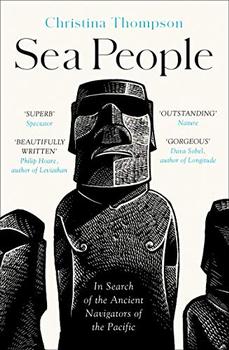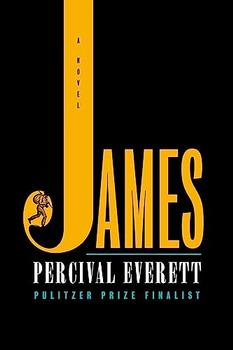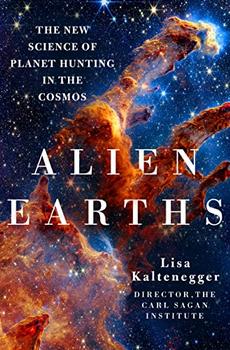Summary | Excerpt | Reviews | Beyond the Book | Readalikes | Genres & Themes | Author Bio

Critics' Opinion:
Readers' Opinion:
First Published:
Mar 2019, 384 pages
Paperback:
Mar 2020, 384 pages
 Book Reviewed by:
Book Reviewed by:
Jordan Lynch
Buy This Book
Excerpt
SEA PEOPLE: THE PUZZLE OF POLYNESIA
In the 1970s the Polynesian Voyaging Society built and launched a Polynesian voyaging canoe with the intention of sailing it from Hawai'i to Tahiti using only traditional techniques. The canoe, christened Hōkūle'a, was piloted by Mau Piailug, a navigator from the Caroline Islands. The goal of the project was to show that, although no such voyage had been made for hundreds of years, ancient Polynesian voyagers had been able to navigate distances of more than 2500 miles using nothing more than their knowledge of the wind, sea, and stars.
On May 1, 1976, the Hōkūle'a set sail from the island of Maui. Just before their departure, Mau addressed the crew, telling them how to behave while they were at sea. "Before we leave," he told them, "throw away all the things that are worrying you. Leave all your problems on land." On the ocean, he said, "everything we do is different." At all times, the crew would be under the captain's command: "When he says eat, we eat. When he says drink, we drink." For three, maybe four weeks, they would be out of sight of land. "All we have to survive on are the things we bring with us ... Remember, all of you, these things," he concluded, "and we will see that place we are going to."
On board, in addition to Captain Kapahulehua and Mau, were Ben Finney, whose job it was to document the voyage, and David Lewis, who would make a record of Mau's navigation. Tommy Holmes sailed as a member of the crew, with the particular charge of looking after the animals—a pig, a dog, and "the proper moa" (a chicken)— along with a variety of roots, cuttings, and seedlings, wrapped in damp moss, matting, and tapa cloth to protect them from the sea. Accompanying the canoe in case of trouble, and to keep the detailed record of their position that would later be compared with Mau's daily estimates, was the sixty-four-foot ketch Meotai.
The primary navigational challenge was to keep the canoe far enough to the east as it made the long journey south. Hawai'i is more than 2,600 miles north of Tahiti, but it is also about 500 miles west. The winds along the route are predominantly from the east—northeast above the equator and southeast below it. Add to this a westward-setting current and the problem was clear. "Our strategy," wrote Finney, "was to sail as hard into the wind as the canoe would point without losing too much speed ... and then to hold on to as much of that easting as possible." The main worry was that when they reached the latitude of Tahiti, they would find themselves too far west and would then have to beat back into the wind to reach their destination.
One of the biggest unknowns was whether Mau's navigational knowledge would be sufficient, given that the route was entirely unfamiliar to him. "A medieval Tahitian or Hawaiian navigator," wrote Lewis, "would have possessed information about the Hawaii–Tahiti seaway exactly comparable to Piailug's about his own and neighboring archipelagos." He would have known the star path, the winds and currents likely to be encountered, and the distance typically covered in a day's sail; he would be sailing, you might say, in his own neck of the woods. But Mau came from a completely different part of the Pacific, far to the west, where the sky and sea and weather patterns were all different, and his experience covered only some of the latitudes that would be traversed in the course of this journey. This last had significant implications for the navigation— the North Star, for instance, figures prominently in Carolinian navigation, but below the equator it can no longer be seen. Thus, once they crossed over to the Southern Hemisphere, Mau would lose an important celestial reference point. Part of Lewis's job had been to help Mau fill in the inevitable gaps in his geographic knowledge, and one of the ways they did this was by visiting the planetarium at the Bishop Museum. There, using the star projector, they simulated the way the night sky would change as the canoe traveled from the Northern to the Southern Hemisphere. "Once this background was filled in," wrote Lewis, Mau "laid down his strategy for the voyage—the etak (the Marquesas) and the star courses to be followed."
Excerpted from Sea People by Christina Thompson. Copyright © 2019 by Christina Thompson. Excerpted by permission of Harper. All rights reserved. No part of this excerpt may be reproduced or reprinted without permission in writing from the publisher.




There are two kinds of light - the glow that illuminates, and the glare that obscures.
Click Here to find out who said this, as well as discovering other famous literary quotes!
Your guide toexceptional books
BookBrowse seeks out and recommends the best in contemporary fiction and nonfiction—books that not only engage and entertain but also deepen our understanding of ourselves and the world around us.